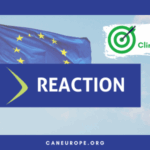POSITION PAPER
The Russian invasion of Ukraine changes the perspective on the gas package and even further underlines the need to move away from fossil gas.
The Russian invasion of Ukraine shows the need to decrease our dependence on fossil gas. The proposals under the Fit for 55 package focusing on clean solutions are key levers to achieve it. Delivering the EU Fit for 55 package and accelerating the deployment of renewable electricity, energy efficiency, and electrification would cut 101 billion cubic metres (bcm) of gas consumption, or 66% of the yearly Russian imports by 2025. Among the files under discussion, the Renewable Energy directive (RED), the Energy Efficiency directive (EED), and the Energy Performance of Buildings directive (EPBD) contain crucial provisions that can deliver deep fossil gas demand cuts. They should be prioritised and their ambition ramped up.
However, the proposed gas package offers very little to address the effects of the current crisis. The package is built on price assumptions that are now out of date: the relative price of gas under an LNG-based diversification strategy will be much higher than the one supplied by Russia in the last decade. Furthermore, the current situation casts serious doubts over the availability and affordability of blue hydrogen (i.e. made of fossil gas and coupled to carbon capture and storage), a key feature of the proposed gas package strategy and presented as an enabler for the hydrogen economy.
To be fit for purpose, the gas package should drop its framing of a one-to-one replacement of fossil gas with renewable and low carbon gases. Instead, it should focus on putting in place tools that enable the scaling down of gas use in the market and on using hydrogen only for the most strategic applications. Due to the expected impact of the war on gas energy prices, the package should bring special attention to managing this in a socially equitable way. In practice, this means revising the Commission’s impact assessment to include the impact of the Russian disruption on the future gas market, the cost of the current LNG diversification strategy, and the impact of prices on the future of blue fossil-based hydrogen to identify the most cost-effective phase-out pathway. In particular, the role of gaseous fuels in buildings should be re-assessed and compared to electricity-based solutions. Such a revision would also be the opportunity for the Commission to ensure the consistency of the proposal with the climate targets and the broader Fit for 55 package, as foreseen by the climate law.
Download the full position paper from the link below.



